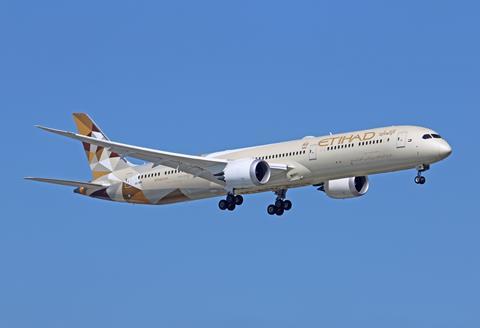Boeing may need to take a forward loss on its 787 programme if it must further trim production or if long-term demand dries up.
On 27 January, chief financial officer Greg Smith warned of the possible charge, which could be required under Boeing’s programme accounting method of reporting programme costs.
“If we are required to further reduce the accounting quantity and-or production rates, or experience other factors that could result in lower margin, the programme could reach forward loss in future periods,” Smith says.

“The 787 programme has near break-even gross margins due to the previously announced reduction rates and programme accounting quantity,” he adds.
Under programme accounting, Boeing tallies the expected entire cost of a programme, then expenses portions of that cost against deliveries. Fewer deliveries, or slower production rates, affect reported profitability.
At the end of September 2020, Boeing’s 787 programme accounting was based on the expectation of 1,500 787 deliveries over the life of production. The figure was 1,600 at the end of 2019.
Boeing is also cutting 787 production to five jets monthly, down from 14 in 2019.
In a 26 January research report, JPMorgan calls a 787 future charge “possible.” Boeing took a $6.5 billion loss on its 777X in the fourth quarter of 2020.
Taken together, those charges highlight “the degree to which the 737 Max will be almost the sole contributor to” Boeing’s commercial aircraft earnings.


























